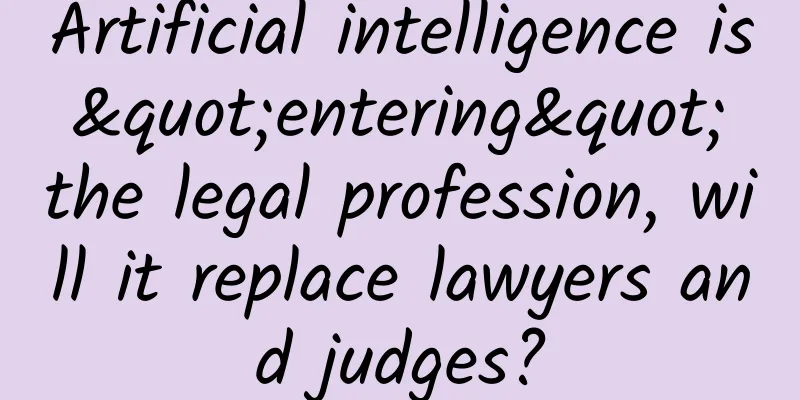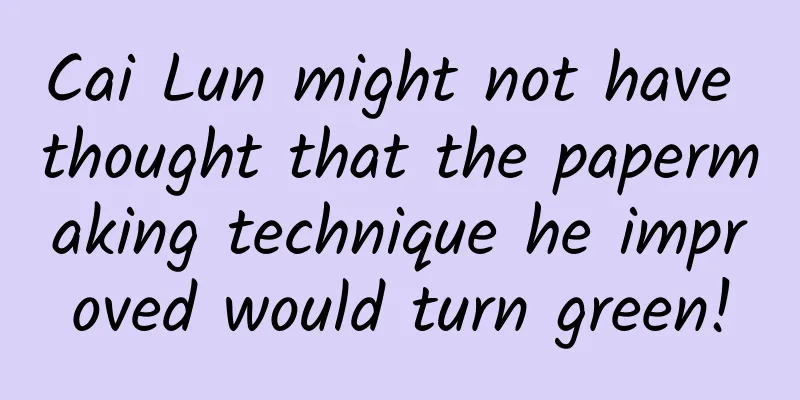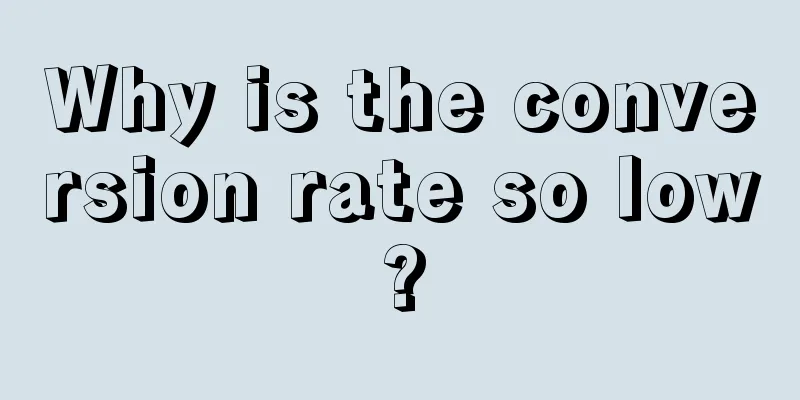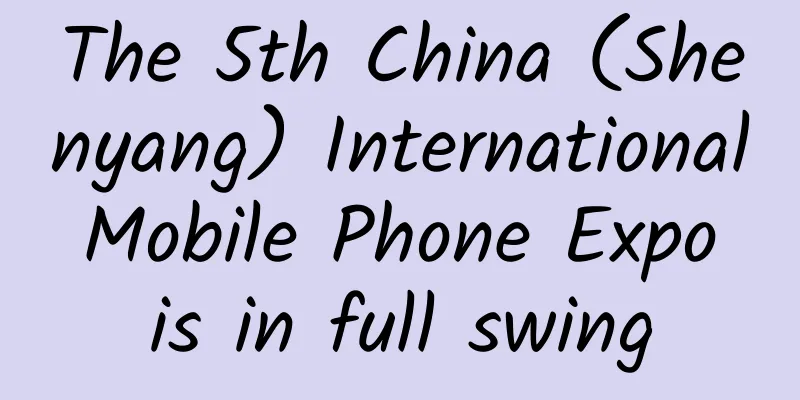Artificial intelligence is "entering" the legal profession, will it replace lawyers and judges?

|
On August 24, 2023, the Science Popularization China Starry Sky Forum, with the theme of "Where is the track for general artificial intelligence?", invited 4 experts in the field of artificial intelligence research to focus on theoretical paradigms, goals, implementation methods, applications, etc., and talk about how the future general artificial intelligence technology will affect the entire human society. Shen Jianming , a lawyer from Hubei Jingzhuo Law Firm and a teacher from the School of Liberal Arts and Law of Hankou College, gave a speech: "The Limitations and Prospects of Artificial Intelligence Legal Reasoning Systems" The following is an excerpt from Shen Jianming’s speech: On December 9, 2022, the Supreme People's Court issued the "Opinions on Standardizing and Strengthening the Judicial Application of Artificial Intelligence", which proposed that by 2025, my country should basically build a relatively complete judicial artificial intelligence application system; by 2023, it will build a judicial artificial intelligence application and theoretical system with normative guidance and application demonstration effects. Since 2016, the Supreme People's Court and the Supreme People's Procuratorate have issued a series of planning opinions on "smart courts" and "smart procuratorial work", and people's courts at all levels have responded. In 2016, the Hangzhou Court launched the Faxiaotao system, focusing on building online courts. Beijing courts have successively launched the Rui Judge Intelligent Judgment System, and Shanghai courts have built the 206 Intelligent Criminal Case Assistance System, which not only realizes the intelligence of court affairs in terms of procedures, but also plays a great role in trial activities. Copyright images in the gallery. Reprinting and using them may lead to copyright disputes. The artificial intelligence of law is not only driven by policies and technologies in the Chinese legal community, but countries around the world are also involving their own trial service systems. The most typical example is that the US court has adopted the COMPASS criminal trial sentencing system, which mainly uses big data operations to annotate elements of criminal case documents, analyze the sentencing process, and standardize the judgment documents. The relevant elements in the documents are extracted and divided into general elements, sentence elements, etc. For example, in the case of robbery, there are ultimately factors such as whether it was robbed multiple times, whether it was robbed with a weapon, and the amount of robbery. By assigning different weights to them, the judge can be supported with a comprehensive sentencing reference opinion. With so many legal artificial intelligence systems providing support to judges, we have to reflect on two of the issues. Question 1 : Can artificial intelligence systems perform roles such as judges and lawyers? Can artificial intelligence systems conduct judicial trials? Question 2 : Can artificial intelligence systems perform legal reasoning? Especially with the rapid advancement of technology, we need some "cold thinking" to respond to this question. First of all, we need to understand how mainstream artificial intelligence currently implements legal reasoning and how it responds to legal issues? Since the 1950s, artificial intelligence has shown a rapid development trend, and two different research paths of artificial intelligence have emerged, represented by symbolism and connectionism , and both paths have achieved gratifying results. 1. Symbolism Symbolism, the basic assumption is that human psychological ability is essentially a physical symbol system, and the human brain is similar to a physical symbol system. To solve a problem is to search and find a suitable way among all the possibilities of a given problem , that is, we use such a symbol operation of the computer to realize the process of human beings finding solutions, that is, cognition and calculation. Early legal artificial intelligence was built on the logical path of symbolism. Artificial intelligence scholars believe that as long as the artificial intelligence system understands all legal rules and the rules of legal reasoning, it can realize the automation of legal reasoning. This is not only the pursuit of artificial intelligence scholars, but many legal scholars have also expressed the same vision. German thinker Max Weber once likened the ideal judicial model to a vending machine: case facts are input into one end, and a judicial decision is produced at the other end based on predetermined legal norms. Copyright images in the gallery. Reprinting and using them may lead to copyright disputes. Many legal professionals also believe that law is a science, and that they can derive correct legal rules and conclusions from several fundamental principles and concepts based on scientific methods. However, under the path of symbolism, the progress of legal artificial intelligence has been very slow. Although there is a case retrieval database of laws and regulations, it is impossible to achieve true legal reasoning, let alone form judicial judgments. Therefore, the experimental results of the technology also prove the partial failure of symbolic artificial intelligence systems in the legal field. The reason is that artificial intelligence scientists underestimate the complexity and openness of the legal system itself. The famous American Supreme Court Justice Holmes once said, "The life of law does not lie in logic but in experience." The application of legal rules requires not only the deduction of legal logic, but also the social experience behind the rules. The application of these rules is also very dependent on the background knowledge of judges. Judges need to weigh many factors such as the legal sentiment, moral policy, etc. contained in the rules. Therefore, the rule system constructed by computer-substantiated language is difficult to construct the two logical relationships between different rules, and it is even more difficult to fully express the meanings and connotations between different rules. It is precisely this kind of meaning and connotation that is rich and difficult to be realized by computer language. Therefore, symbolism is slowly replaced by connectionism. 2. Connectionism Connectionism believes that this itself originated from a cognitive science movement . It explains intellectual activities through artificial neural networks. Neural networks are composed of neurons and weights that connect different neurons. The weights imitate the connection strength between neurons. By simulating the activities of neural networks, human cognitive processes can be realized. The most common applications of connectionist artificial intelligence systems are in speech recognition, image recognition, etc., and the deep learning we often talk about and the recently popular ChatGPT are also concrete manifestations of the connectionist model. Copyright images in the gallery. Reprinting and using them may lead to copyright disputes. This algorithm identifies the different structural differences of different patterns by classification, and uses certain weights to discover the laws of the pattern to achieve machine learning of things. Since connectionism overcomes the problem of complete formalization of symbolism itself, connectionism has a wider range of applications in practice. Many of the judicial artificial intelligences listed above, such as the COMPASS system in the United States, were produced under the connectionist model. The artificial intelligence of connectionist artificial law is of great significance in generating legal documents and assisting judicial decisions. 3. Will artificial intelligence replace judges and lawyers? So can this type of artificial intelligence be competent for making decisions as judges and lawyers? Can it make judicial judgments? Can the reasoning given by judicial judgments be used for legal reasoning? Let's answer this question from four aspects. The first problem is reflected in the data basis of mainstream artificial intelligence. The learning of mainstream artificial intelligence relies on data feeding, and this data is not simply the messy data in the real world. If big data is to become useful data, it is required to identify the data. Through identification, the data must meet the requirements of the algorithm structure so that it can be recognized by the artificial intelligence system. The process of data recognition is the process of cutting out the meaning contained in the original data. The data after cutting can only meet the requirements of a certain artificial intelligence system. This process is complex and diverse, and even some systems are difficult to carry out the cutting process. The complexity and clutter of real data have become the biggest obstacle for mainstream artificial intelligence to achieve its goals. Copyright images in the gallery. Reprinting and using them may lead to copyright disputes. The second problem is in language. Human daily language is structured, and language expression has its inherent grammatical structure, and the law is based on this language rule. Legal language has its own structural characteristics, so from a formal perspective, mainstream artificial intelligence only identifies rules through data identification, while ignoring the structural characteristics of the rules themselves. From a content perspective, identifying legal rules in a data-based way ignores the characteristics of legal language itself. The characteristic of legal language is openness. The data required by artificial intelligence must meet the requirements of the system itself. This requires the tailoring of samples from the real world. Meaning and connotation are lost in this process, which is an insurmountable problem. The third question is about the rules of legal reasoning. The process of mainstream artificial intelligence to achieve legal reasoning is to first classify various legal disputes in daily life, distinguish different types of disputes, and then input a large number of judicial judgments for a specific dispute, so that the artificial intelligence system can learn the general judgment results of such disputes. It is in the process of learning this rule that artificial intelligence obtains the characteristic value of the degree of influence of different behavioral rules on the outcome of the case, which is sufficient to derive the probability of this type of norm deriving a general judgment result through mathematical calculations, especially probability calculations. This is obviously inconsistent with the general rules of legal reasoning. Legal reasoning is the process of matching facts with rules, not calculation, let alone probabilistic matching. In addition to the inconsistency of legal rules, AI legal reasoning also has major problems at the legal level in terms of reasoning rules and the reasoning process. These problems are reflected in the process of artificial intelligence generating legal judgments. The process of artificial intelligence generating legal judgments is generated in a mathematical way. As a factual process, the parties cannot intuitively judge the process of generating legal results. Therefore, because the reasoning process itself is not public, it naturally leads to the actors' suspicion of the results generated by artificial intelligence. This is what we call the "black box" of the algorithm, and the legal procedure is to play the important role of public legal reasoning. Copyright images in the gallery. Reprinting and using them may lead to copyright disputes. Judicial openness is the basic principle of judicial adjudication. In the judicial process, both parties explain the facts through evidence and interpret the basis through the law. This is a fair contest between the prosecution and the defense. The parties can understand the process of judicial decision-making through open procedures and can settle disputes through judicial procedures. This is the basic meaning of judicial openness and a basic requirement of the rule of law. The non-disclosure of "black box" operations itself violates the basic principles of justice and the basic spirit of the rule of law. Therefore, the AI legal system has insurmountable limitations in data, language, reasoning and procedures. Therefore, many AI experts and legal scholars believe that legal AI needs to open the "black box" to increase the transparency and explainability of the algorithm, but whether the "black box" can be opened or not is still a long way to go. Mainstream artificial intelligence has huge problems in achieving judicial reasoning. The reason is that the mainstream artificial intelligence reasoning process itself is mathematical, and what is calculated is the compatibility between behavior and results. The work done by mainstream artificial intelligence is just to match the behavior with the result. When it meets certain probability basis, we think that legal reasoning is completed. Therefore, the essential calculation of mainstream artificial intelligence is probability calculation. So here we have to raise a question: Is the law computable? Or is the law computable? The answer is obviously no. Copyright images in the gallery. Reprinting and using them may lead to copyright disputes. From the experimental results of mainstream artificial intelligence, we can understand the answer. Legal reasoning is essentially comprehensive. The result of legal judgment is not included in the premise. It is also based on the judgment at the factual level, supplemented by the normative basis to obtain the conclusion of legal judgment. However, the basis of mainstream artificial intelligence is that calculations are based on the results of operations based on mathematical rules. Mainstream artificial intelligence only obtains some mathematical rules from many cases, and this data rule itself is contained in the legal rules. Therefore, the judgment of mainstream artificial intelligence is analytical. The law is fundamentally not computational, and the computational nature of the law is only mentioned at the cognitive level in a local sense. The results of the law require value judgments and comprehensive judgments. The problem of mainstream artificial intelligence in legal reasoning is fatal from a legal perspective. The main artificial intelligence legal reasoning fundamentally denies the basic requirements of legal reasoning, the basic model of legal adjudication, and even the basic principles of law. So what is legal reasoning? In short, legal reasoning is a method of deriving unknown results from known premises. Legal reasoning is a kind of thinking activity that lawyers use in the process of applying the law to determine legal facts, select legal norms, and on this basis, select the specific scope of the program to which the legal facts belong, and cite legal provisions to obtain the judgment result. The common form of legal reasoning is syllogism reasoning, that is, on the basis of satisfying the major premise and the minor premise, the corresponding conclusion can be deduced. The legal provisions are the major premise, and the basic facts are the minor premise. When the minor premise meets the conditions of the major premise, the legal conclusion can be deduced, such as the death penalty for intentional homicide. Zhang San intentionally killed Li Si, so Zhang San should be sentenced to death. In the process of syllogistic reasoning, not only the legal conclusion needs to be proved, but also the major and minor premises. We need to prove that Zhang San is the subject of intentional injury, Zhang San has subjective intent, Zhang San has the behavior of killing, and Zhang San's behavior caused Li Si's death. This process requires us to review the legal provisions and basic facts back and forth, and find both appropriate legal provisions and basic facts that conform to the legal provisions. Therefore, the process of legal reasoning is a back-and-forth flow of eyes between facts and norms. This process is first of all public, that is, the plaintiff and the defendant use evidence to find the boundaries and scope of the corresponding facts and legal norms, and finally the judge makes a comprehensive legal judgment. Secondly, legal reasoning is refutable . This refutableness is mainly reflected in court debates. The dialogue in court debates is that both the plaintiff and the defendant argue the legitimacy of their own views, and are refuted by the other party's views. This process is a typical legal reasoning process. Secondly, legal reasoning is defeasible, that is, the result of legal reasoning is not guaranteed, nor is it an absolute truth. The premise of legal reasoning is based on the reflection of objective facts by evidence, and evidence is used to prove and disprove. Therefore, when legal reasoning encounters disproven evidence or other opposing elements, the result of legal reasoning is negative. Therefore, legal reasoning is not a simple formal logic reasoning. Legal reasoning also contains many characteristics of its own. It is based on technical paths such as symbolism and connectionism. This technical path has a very broad prospect in the many applications of special artificial intelligence and can greatly improve judicial efficiency. However, special artificial intelligence has encountered more or less difficulties in the practice of legal application, and some of these difficulties are even fatal in theory. To solve such a problem. General artificial intelligence seems to give us some inspiration, so can legal general artificial intelligence realize legal reasoning? Can the legal reasoning system of general artificial intelligence be competent for the role of judges and lawyers? 4. Application: NARS system The non-axiomatic system developed by Professor Wang Pei is also called the NARS system. The NARS system is an intelligent reasoning system that mainly uses non-axiomatic logic to unify the forms of affairs and handle some uncertain relationships between things through logical rules such as deduction, induction, integration, and revision. The basic assumption of the NARS system is that intelligence is understood as an adaptive ability under the condition of sufficient knowledge and resources. The assumption of relative insufficiency of knowledge and resources is the logical premise of the NARS system. It is also based on such an assumption that the NARS system has the characteristics of finiteness, substantial openness and adaptability. Copyright images in the gallery. Reprinting and using them may lead to copyright disputes. Finiteness means that the computing power and working storage space of NARS are limited. Real-time means that it needs to handle various tasks that occur at any time in real time, including knowledge acquisition and decision-making. Openness refers to the openness of new and old rules that can only be expressed in the system language. It is manifested in the concepts and knowledge of the NARS system itself, which is open to experience and the objective world without being restricted by other things. Adaptation means that the system can actively learn from experience and acquire knowledge to adapt to possible environments and task requirements. So can the NARS system achieve legal reasoning? Below, I will explain from three aspects: the premise of legal reasoning, conceptual knowledge, and legal reasoning rules. 1 NARS: Premises of Legal Reasoning The understanding of the NARS system is based on the past experience of its environment, and forms concepts and knowledge. The reason why NARS is like this is due to its transformation and upgrading of formal logic. The form of real function adopted by the NARS system leaves the judgment of the authenticity and feasibility of things to evidence, and the evidence comes from the past experience of the system of things to solve the problem of system adaptability. This leads to a problem that the conclusion of the NARS system is not necessarily guaranteed. It can only find certain basis in the evidence it has experienced or indirectly experienced, which is exactly consistent with the premise of legal reasoning. Since human cognition and rational ability are limited, no one can completely restore the objective process of the occurrence of facts, and as a third party, they can only judge and infer the development process of things through evidence. As long as this reasoning process meets certain standards, it is regarded as true, that is, legally true. Legal reasoning is based on limited mechanisms, and decision-making reasoning is made when the understanding of the facts of the case meets the standards required by the law. The standards for judicial trial certification are mainly based on excluding reasonable doubt, high probability (generalization) and preponderance of evidence. That is, when a set of evidence can exclude reasonable doubt and has a high probability of occurring, then we are sure that the factual development is true. In addition to achieving authenticity, legal reasoning also has other requirements, that is, the contextual knowledge of legal reasoning. 2 NARS: Concept Knowledge The legal judgments that lawyers have to make are based on specific factual situations, and this specific factual situation contains a lot of background knowledge. Legal reasoning is to incorporate specific situations in the original social life into the legal system, which is mainly achieved through legal concepts and legal rules. For example, intentional negligence is an induction and summary of a certain subjective state, and insult and indecency are abstract summaries of another behavior. The premise of legal reasoning is based on these concepts and rules, but these concepts and rules are not simply abstract terms and nouns, but contain a rich social life background. Only with sufficient social experience can we understand the meaning behind this legal concept. Legal evidence provides proof and support for the connotation of this legal concept. The basic logical setting of the NARS system is to incorporate experience into it. During the formative period of the NARS system, NARS formed a set of semantics based on experience. The meaning of each word and the truth of each sentence in the NARS system are, in principle, determined by the system's acquired experience. The knowledge of the NARS system is not a model of the world, but an abstract summary of the system's experience. This experience is an effective record of the interaction between the system and the environment. The abstraction of these experience fragments forms concepts, which are named as terms in NARS. The terms refer to the concepts in the system, not things outside the conceptual system. However, such a concept is related to past experience to a certain extent. This connection constitutes a network of concepts between concepts and forms a network of knowledge. The conceptual system of NARS is not simply a certain term that contains its unique experience and evidence, and maintains an absolute connection with facts. Therefore, the NARS reasoning process is based on this concept or term. Reasoning through NARS can effectively avoid the formalization, symbolism and emptiness in the reasoning mode of special artificial intelligence, especially symbolic artificial intelligence, thereby establishing a connection between concepts and real events. 3 NARS: Rules of Legal Reasoning The syllogistic reasoning form of the NARS system mainly includes deductive reasoning, inductive reasoning, and attributive reasoning. Based on attributive and inductive reasoning, comparative and analogical reasoning are derived. This kind of reasoning is not simply based on the concept of terms. The load of terms and concepts has formed many complex statements and sentences, and this reasoning rule is also applicable to this. The basis of legal reasoning is legal concepts, which is to explore the logical relationship between legal concepts and legal rules. The reasoning of NARS is also roughly the same, so the rules of NARS reasoning are competent for legal reasoning. Because the NARS system itself has such a non-axiomatic characteristic, the NARS system can realize or partially realize the function of legal reasoning at the theoretical level. Perhaps it is based on the summary and response of NARS reasoning to the regularity of human thinking process that the NARS system can partially realize the legal reasoning of artificial intelligence. So can artificial intelligence realize legal reasoning? At this level, we need to look back at the inspiration brought to us by general artificial intelligence. If artificial intelligence wants to realize legal reasoning, its fundamental requirement is to reproduce the basic characteristics of human thinking, and this process obviously has more prospects for legal general artificial intelligence. Planning and production Editor: Jin Yufen (Intern) |
<<: After the “Chang’e Stone”, what new mysteries does the moon have?
>>: 【World First Aid Day】Protect lives, “rescue” around you
Recommend
After the bonus period, you should take this complete guide to channel operation
The traffic dividend has passed, so how will traf...
Testin enters crowd testing, launching the world's first professional mobile app crowd testing platform
Testin, a third-party mobile application and game...
Is the Earth Getting Saltier? Human Activities Accelerate the Natural Salt Cycle
Science Times reporter Ma Aiping Professor Sujay ...
How to study at the beginning of the school year? Follow the aerospace scientists!
The new semester has begun. Are you ready to meet...
Scientists let 10,000 worms share a pizza. The reason behind this is heartwarming?
Written by: Qi Zai Layout: Bai Ruobing Excuse me,...
Zhongshentong - How to get an account with over 10,000 followers in 15 days, 31 practical courses on how to create a hit account
Zhongshentong - How to get more than 10,000 follo...
Why did Sony mobile phones fail in China?
Yesterday, the news of Sony Mobile's massive ...
Analysis of the principle of attribute animation mechanism
[[437959]] This article is reprinted from the WeC...
“The sky is vast, the wilderness is boundless”, what important role does agriculture and animal husbandry play in the sea?
When it comes to ranches, everyone will think of ...
Apple's movie marketing strategy
Recently, Knives Out director Rian Johnson told V...
This image ended the 170-year debate about ice丨Expo Daily
It's time to eat insects again. Oh no, it’s t...
Northerners are generally fatter than southerners. Can we blame the geographical differences?
Friends Have you found Many northerners around me...
Cancellation and exceptions in coroutines | Detailed explanation of cancellation operations
In daily development, we all know that unnecessar...









